As we made our way through the dust filled and packed streets of Kathmandu, I couldn’t help but wonder “What will Hattiban look like?”. As the paved road slowly turned into a mix between gravel and dirt, the streets became less congested and buildings more spread apart with the mountains, or as the Nepalis call them “Foothills” of Kathmandu beginning to get closer and closer. What I was told about Hattiban was that it was a beautiful area with a local temple and ample trails for running. So, my western mind, having never been to Nepal or Asia before, somehow dreamed up a lush green flat oasis of an area with a massive colorful monastery centrally situated with monks praying and running trails winding around it and through the local forests. I think I can begin by stating that my vision was the opposite of the reality of what was to be, and certainly not in a bad way.
As our bus began to drive at the base of one of the foothills, surely towards my flat vision of Hattiban, we suddenly turned up a steep rocky road to go up! “This can’t actually be a road?!” I said to myself in astonishment as we kept going up this tiny road made up of nothing but potholes and boulders. I saw so much confidence in our bus driver that I could not help but feel slightly at ease as we zig-zagged up and up the side of this foothill. The bus parked itself in-font of a large iron gate with small wood fencing enclosing a tan field inside with the whole area being under the shade of the towering Nepali Pine Trees canopy. In formation we formed a line and took all of our gear off the bus to prepare for making our home basecamp for the next two weeks.
This would be the first time I would be camping in my life. So, I can tell you that I was excited…but also pretty intimidated and worried if I’d get used to this new lifestyle. However, it took only minutes before our lead instructor began guiding us through the process of setting up camp since the sun was slowly starting to go down. Cool, confident, and collected, our lead instructor, Amrit Ale, gave off an aura of peace and wisdom that put us all to ease as we began building our home base. It wasn’t soon after that our tents were all up and what used to be a little empty field on a foothill became a home.
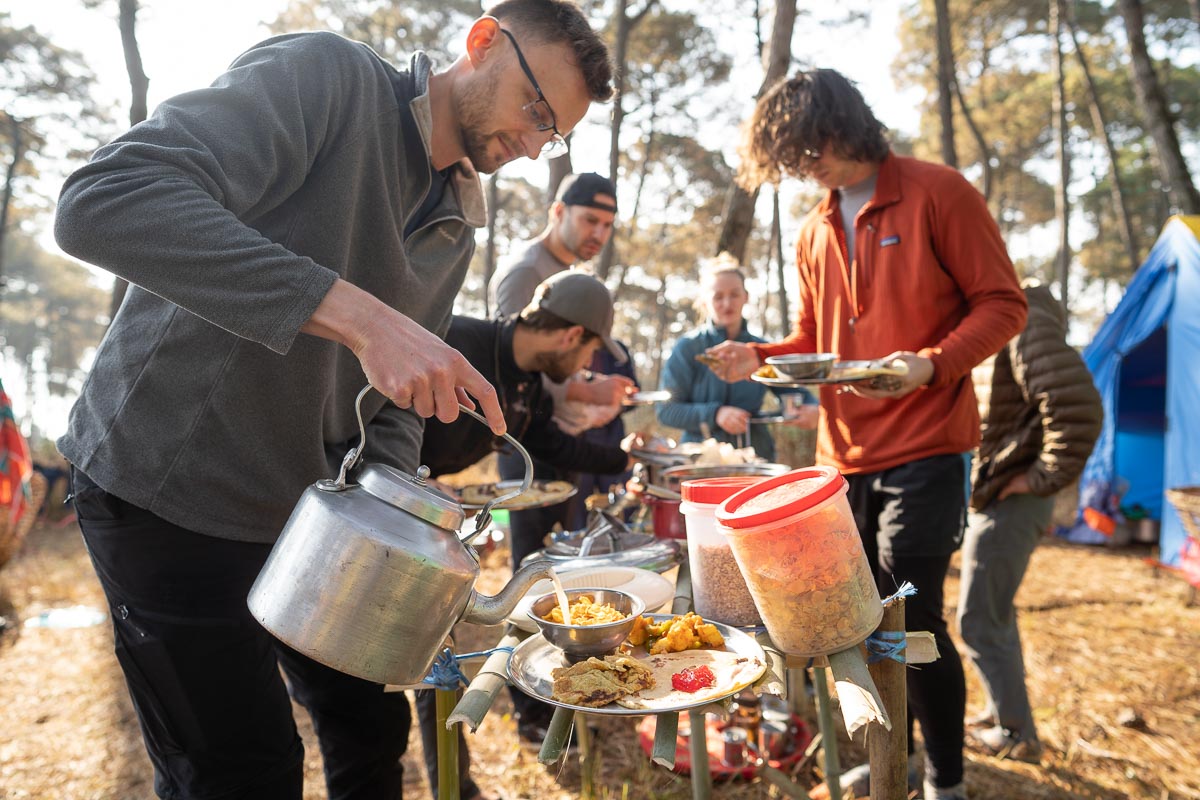
This was to be two weeks of learning all things Wilderness First Aid as well as an introduction to Outdoor Climbing. Let me begin by stating I had zero knowledge of Wilderness First Aid and my climbing experience was limited to the past few months of self-training at a local indoor climbing gym. However, alongside Amrit was a man whom we would come to see as not only Amrit’s Uncle, but also our own, Chandra Ale. With some 30 years of experience in the outdoors ranging from all forms of wilderness rescue to a mastery of rock climbing and the outdoors, Chandra would be one of our greatest resources in building our confidence as Adventure Guide Trainees. In addition to his skills, Chandra’s boundless desire to help educate us, no matter if it were before dawn or after dusk was a tremendous gift that we’d never be able to pay him back for.
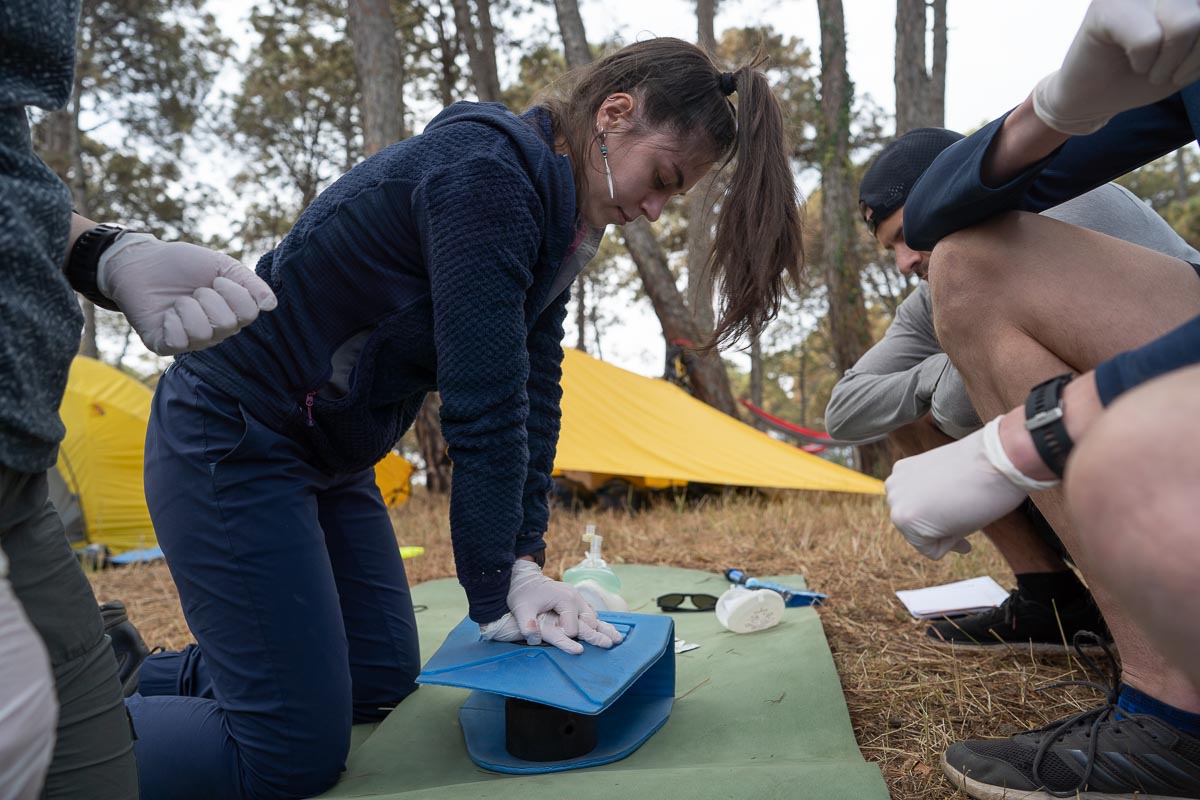
Before we dove into Wilderness First Aid, we began with a half day hike to the Champa Devi Temple. Again, I will remind you of my vision of this being a large beautiful multicolored monastery looking structure on a flat open space. Seeing as our campsite was situated on top of a foothill, the flat open space was definitely out the window, for starters. As we were on top of one foothill, the Champa Devi Temple was located westward, directly up on the next foothill! As we made our way up, there were points where the tall pines would clear and the rolling emerald foothills would appear in such a mystical majesty that I couldn’t help but just stare straight into them as if under some spell.
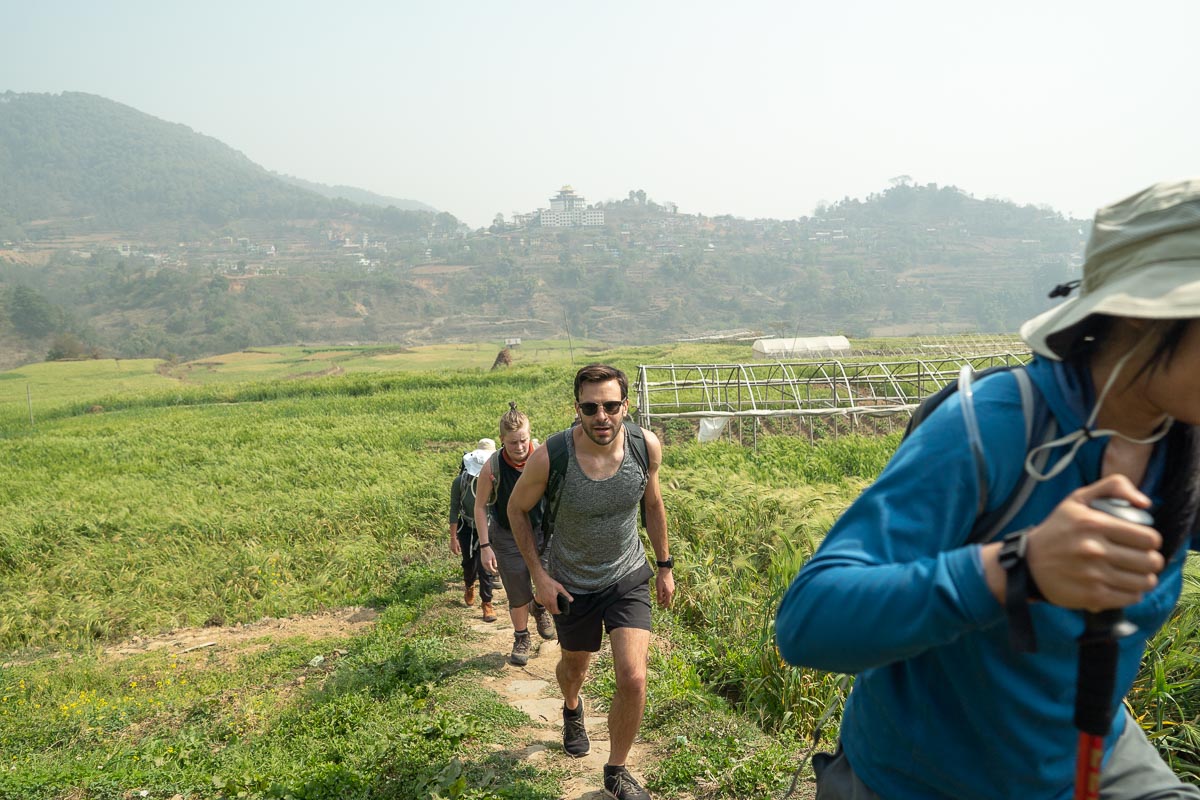
As we climbed, the trail turned from a dirt path to a staircase. We climbed what seemed like an endless number of stairs until we came to it, the temple. A small quaint little space with a few bells, offerings and the trident of Shiva made this little space the Champa Devi Temple. Next to the temple there was a canopied seating area where we all took our rests. I went up to the temple, rang the bell, said a prayer and did my clockwise walk around it in what I believed to be the best way I could respect a place of worship I had only encountered a few times in my life in America. As we sat, resting from the strenuous hike up, the clouds darkened, and white flashes of lightning began and we knew we’d need to make back down to camp immediately so as to not be stuck up here for the night. The slip and slide down that ensued was certainly one for the books and I couldn’t remember the last time being as drenched as when I arrived at camp that evening.
The next day began CPR and Wilderness First Aid Training. This, by far, was the most daunting to me as I had zero background in any form of medicine. However, through a great balance of classroom learning and mock scenarios I soon began to feel more confident. Chandra took the lead in our education and we were certainly privileged to have him share his 30 years of wilderness first-aid experience in educating us. It’s one thing to discuss what to do if there is a hypothetical emergency while in high altitude and it’s another thing to have someone discuss what it was really like and how they used the skills we are learning in helping to save another’s life.
The mock scenarios were my favorite pieces of the education as it allowed me to really put the classroom skills to the test. From using traction-in-line to treat a broken femur, creating a cast for a broken arm, helping a victim of a lightning strike, or treating a hand laceration I kept on feeling stronger and stronger in an area I never knew I could feel strong in. One of the best parts was Amrit and Chandra’s openness to questions and afterhours learning. Many of us would sit with Chandra after the days learning and he would give us all the time to ask questions and help us practice the skills we were learning. We were certainly beyond lucky to have Chandra as our instructor.
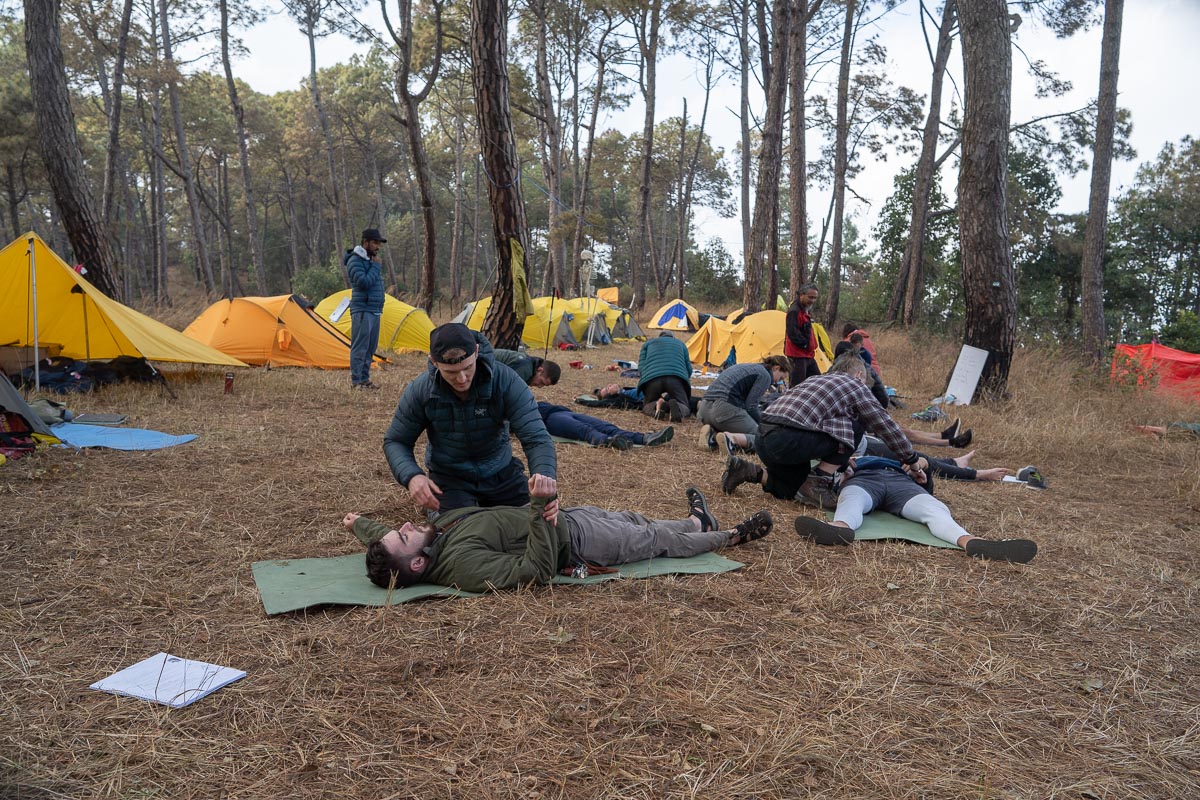
After we took our final examinations for Wilderness First Aid and CPR, Rock Level 1 began. However, before going to the wall, we’d need to understand a lot of the fundamentals and basics before attempting to climb. My understanding of knots was about to be exponentially increased from my base level knowledge which summated to only knowing how to tie my shoes. Knots are the foundation of safety when thinking about all things climbing. Amrit, Chandra and Passang weaved us in and out of knot education from the simple slip knot to the double fishermen. While not every knot would be used immediately, the foundation we were building would aid us immensely in the weeks to come as we advanced in our Adventure Guide Training.

With our knowledge of knots in place, we made our way to The Wall. Climbing is certainly an allegory for life. If there’s one thing people associate life with, it’s climbing. Climbing towards the goals we set forth for ourselves, big or small. Sometimes climbing the wall of life feels like you’re carrying 10,000lbs on your back and other times you feel as though you’re flying up with wings under your feet. The one thing that remains constant is that when you reach a point on a climb that you thought impossible, no matter how complex or trivial, it is a space filled with joy and accomplishment that no one understands as fully as yourself.
We trekked down the mountain to a few open face rock walls where I took my first climbs outdoors. I’d trained in indoor gyms during the winter doing indoor climbing by myself as much as I could but I had never done outdoors and also, due to holidays and COVID, was never able to consistently train either.
After I got up a decent bit on my first climb, struggling with every grab, I was ready to call it and just be happy with where I got. But something deep within me just kept saying “You’ve come too far to stop, too far. Through everything you’ve gone through, the good and bad, you’ve made it, sometimes battered and bruised and other times easy and seamless, and you can make this, you can’t quit. Just push beyond and go!” And, by some hidden power deep within I reached with all my strength, courage and made it to the top. I nearly cried (not a hard thing for me, ha!) but I made it!
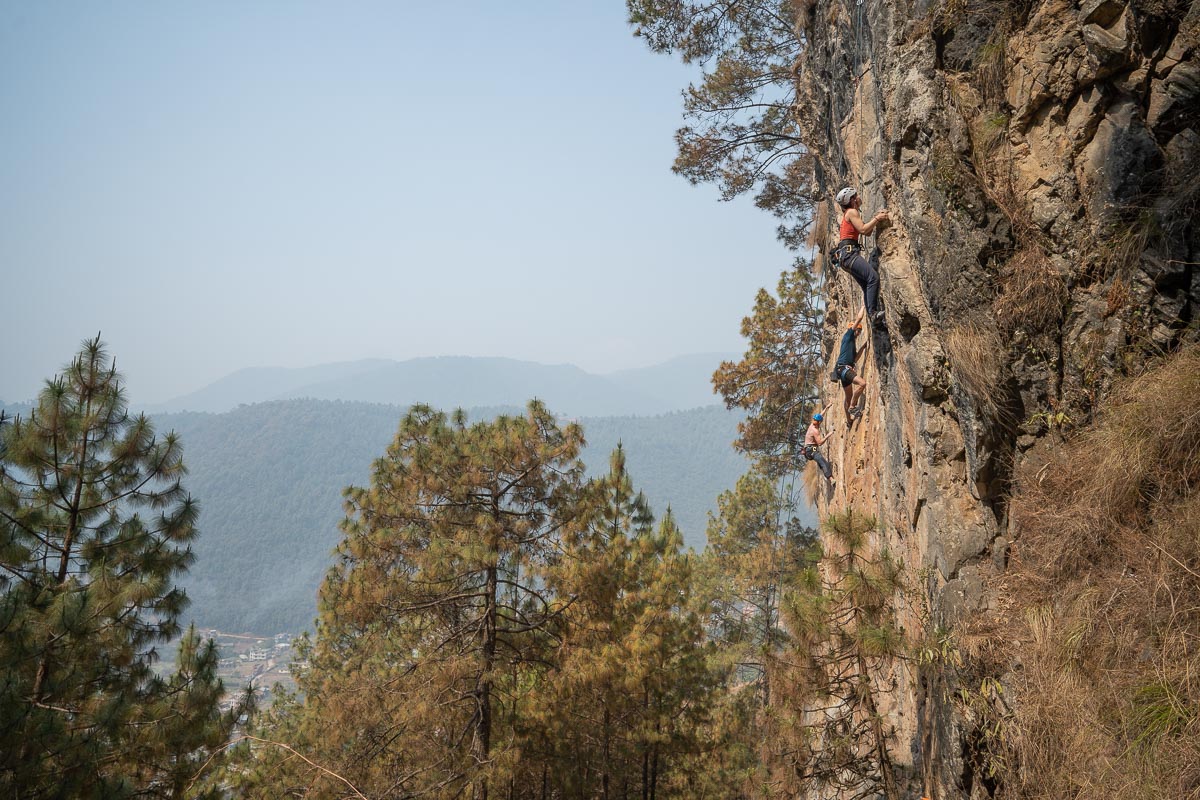
The wall is humbling, and climbing is an experience where you rely on your own physical and mental strength as well as the support of those belaying for you, holding you when you fall and supporting as you climb up. It’s a true fusion of individual effort and teamwork. We were so fortunate to have Amrit, Chandra, Passang and also our two rock guides Bikash and Prabin to help educate and guide us in succeeding on the wall. The confidence I gained from their guidance and educating both on and off would be instrumental as I continued to challenge myself with every passing day.

We were on our second to last day climbing when suddenly I heard a persistent crackling noise. His head perked up and Chandra leapt up on a rock to scan the horizon only to alert us that there was a forest fire starting far off and that we’d need to evacuate The Wall as a precautionary safety measure. We made our way back to camp and learned after dinner that the fire was moving at a steady pace and that we were going to break camp and evacuate a little bit down the mountain to a safer location. Amrit delivered this all in such a calm manner which set the tone for a cool and organized precautionary nighttime evacuation.
We spent the night in our sleeping bags on the floor of a conference hall and I won’t lie in that we were a bit excited to be sleeping on a flat surface for a change! The next morning the air was thicker with a tinge of smoke. Luckily, the fire was not threatening us directly. However, we made the decision to head back to Kathmandu a day earlier for safety. It was in these first two weeks in Hattiban, so far from home, that I learned my spirit of endurance was far stronger than I had known. Adjusting to camping, learning wilderness first aid and beginning my journey on the outdoor wall would all not have gone as smoothly as it did if it were not for Amrit, Chandra, Passang and the crew providing a level of instruction that gave all of us the strength and knowledge to succeed in ways we never knew possible.
Michael Watt, USA

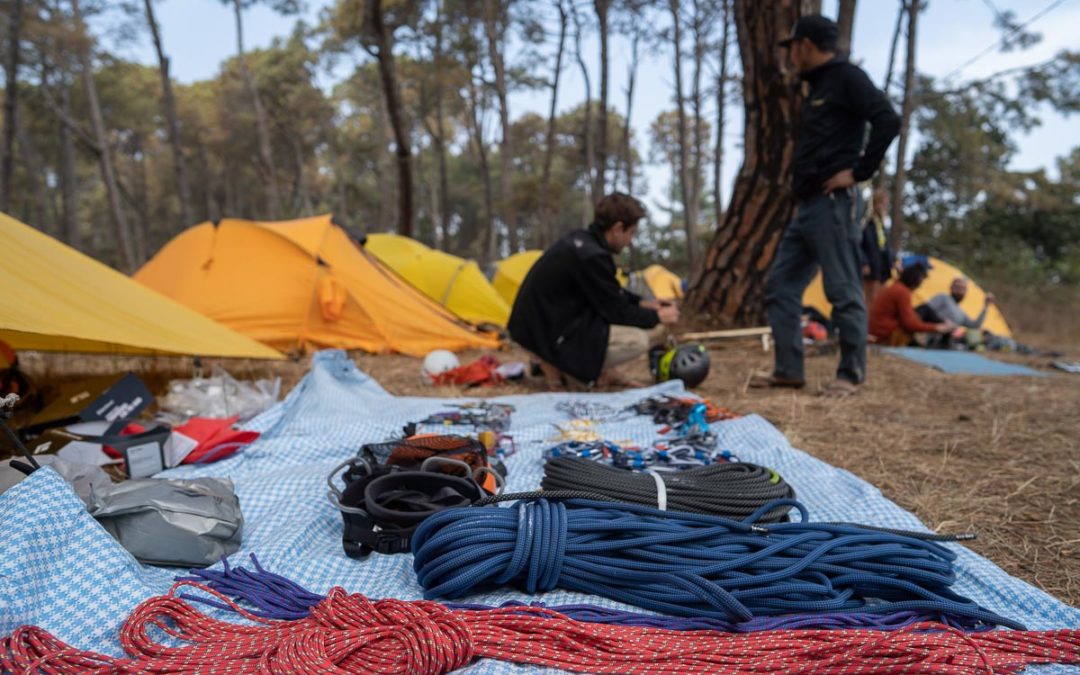
Recent Comments